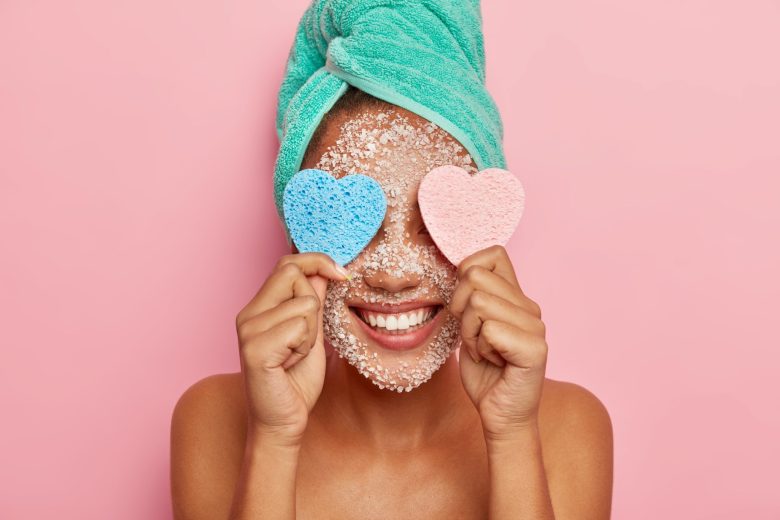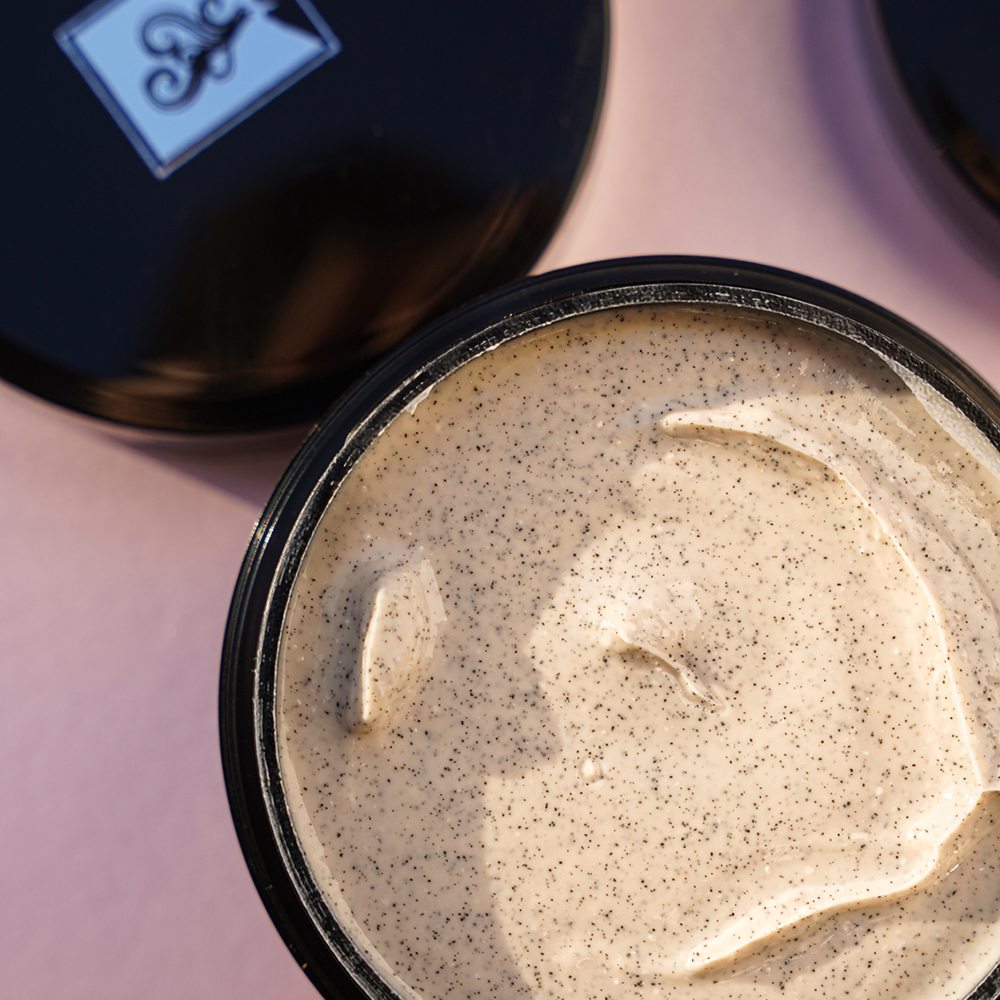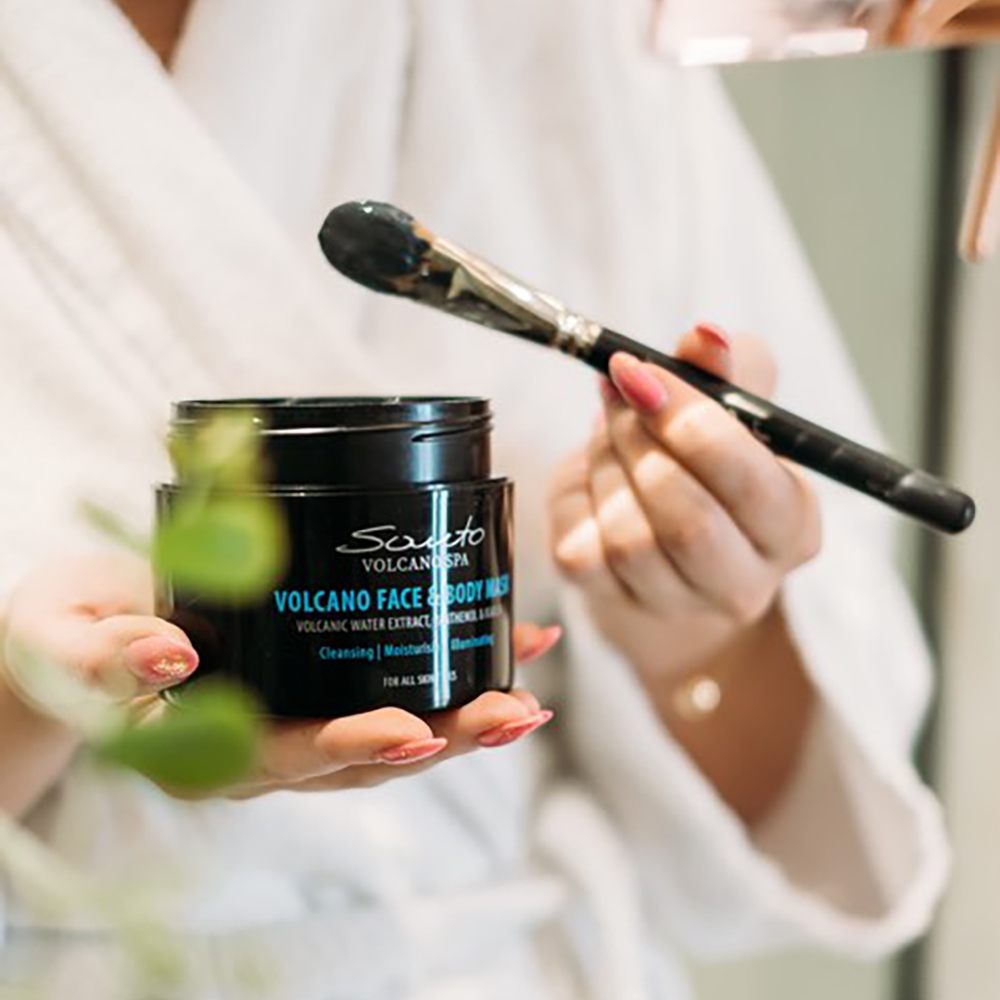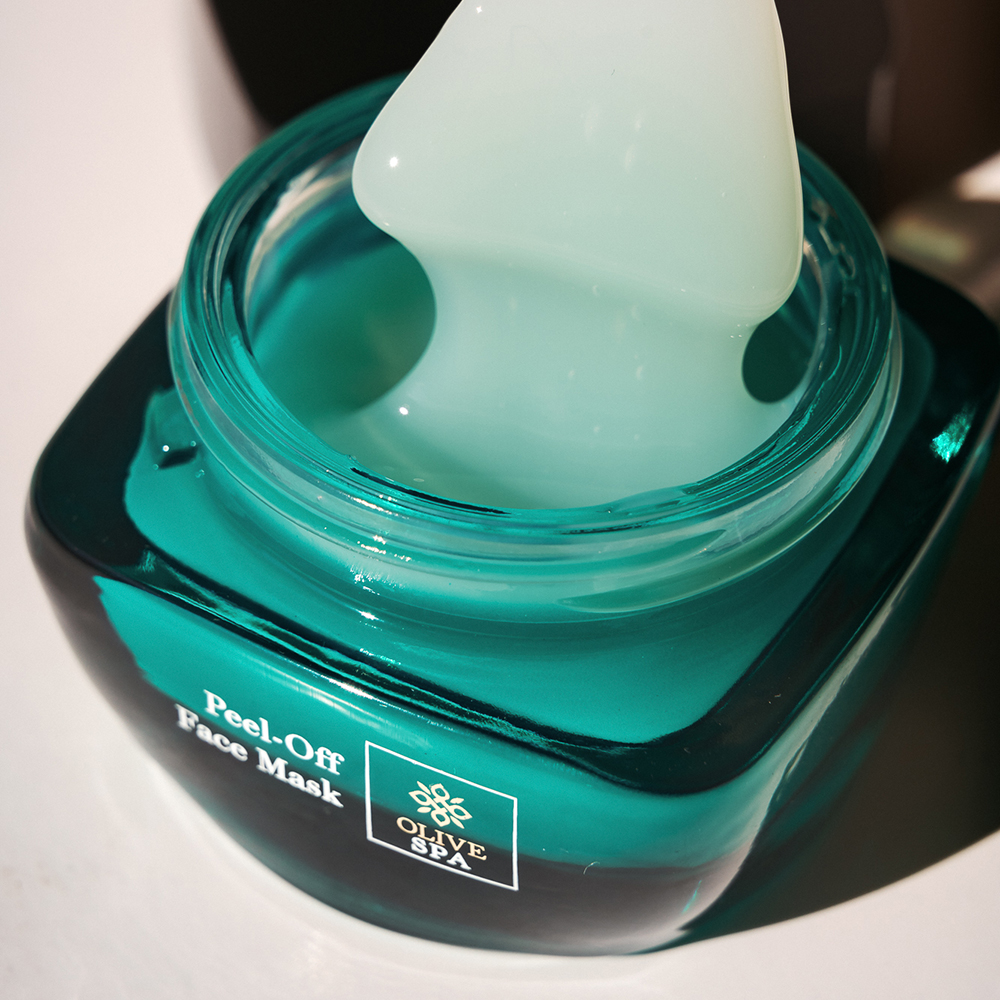Scrubs and Masks: why we need them
Body scrubs have been around for a while, but quite a variety has emerged over the years, including those made of coffee, salt, and sugar. Whether or not you’ve tried one before, you may wonder what benefits, if any, are associated with body scrubs. Using a scrub (or exfoliating) helps remove dead cells built-up on […]

Body scrubs have been around for a while, but quite a variety has emerged over the years, including those made of coffee, salt, and sugar. Whether or not you’ve tried one before, you may wonder what benefits, if any, are associated with body scrubs. Using a scrub (or exfoliating) helps remove dead cells built-up on the top layer of the skin, causing the skin to appear dull and lackluster. After their removal, the skin will appear brighter, smoother, and more vibrant. Regular exfoliation also allows for better absorption of anything you apply over it (like serums or moisturizers) because you removed the dull, dry, dead layer on top of your skin. Desquamation is the natural process of shedding skin, and it happens in a constant, regenerative cycle. The efficiency of this process depends on several factors including your age, skin type, the products you’re using, and your environment. However, the process isn’t 100% perfect, and it can lead to a buildup of dead skin cells on the surface of your skin. This is where body scrubs come in.
Body scrubs remove dead skin cells, and so provide several benefits:
-They allow your skin to absorb moisturizer better.
-They unclog pores and prevent ingrown hairs. By regularly using a body scrub, you’ll unclog your pores, which can prevent razor bumps and ingrown hairs.
-They leave your skin smoother and more even. When dry skin isn’t removed, it makes the skin rough to the touch and has a dull, cracked texture and appearance.
How to use
Using a body scrub is relatively straightforward and safe if you follow a few simple steps:
-Wash with your regular cleanser and rinse your skin in warm water.
-Put a small amount of body scrub in your hand.
-Gently rub it on your skin in small circular motions, using your hand or an exfoliating glove.
-Scrub your skin gently for no longer than 30 seconds.
-Rinse your skin liberally with lukewarm water.
-Shave, if desired.
-Pat your skin dry.
-Apply a moisturizer, preferably while your skin is still damp so that you trap in the moisture.
How often?
In general, you don’t want to use a body scrub on your skin every day or even every other day. Doing this could lead to dry or irritated skin. How often you should use a body scrub (or exfoliate in general) depends on your skin type. But in general, you don’t want to use a body scrub more than twice a week, or you’ll dry and irritate your skin. For sensitive skin, you may want to just use a body scrub once a week. It’s best to use a body scrub while you’re still in the shower but right after washing so that your skin is clean and ready for exfoliation.
Which one is best for me?
It used to be that we mainly only heard of sugar or salt scrubs. Now there are a plethora of different body scrubs on the market. It may take some trial and error to find the one that you and your skin love the most. In general you should try to look for a gentle physical exfoliant with soft, small particles.
Here are a few of the most common types of body scrubs:
Salt body scrub: Sea salt is a natural exfoliant. Its abrasive texture sloughs away dead skin cells easily.
Sugar body scrub: Sugar is a humectant, meaning it pulls water into your skin, leaving your skin hydrated while getting rid of all the dry and dead cells.
Coffee body scrub: Coffee has many benefits, and that carries over to body scrubs. Not only does it have natural exfoliating and anti-inflammatory properties, but it also may improve circulation and smooth skin.
Lavender body scrub: Lavender-based body scrubs can be great for soothing irritated skin, healing inflamed skin, and calming and relaxing your senses. Right before bedtime is a great time to use a lavender body scrub.
Charcoal body scrub: Charcoal has become a go-to ingredient for many beauty and hygiene products. Charcoal is very absorbent, meaning that it grabs all that dirt, grime, and dead skin cells and gets rid of them with ease.
Choose a scrub with salicylic acid if your skin is oily or choose glycolic acid if your skin is sensitive or dry. In this case you should follow up immediately with a good moisturizer. If you’re not acne-prone, you may also want to use a body scrub with moisturizing oils, such as olive oil and avocado oil.
When to avoid
Most people can benefit from body scrubs, although you should talk with your doctor first if you have a skin condition, like psoriasis or eczema, or if you’re using a retinol. Avoid using scrubs on sunburns, damaged skin, or irritated skin. Also do not exfoliate skin while experiencing psoriasis, eczema, active acne, sunburn, skin infection or open wounds. If you have dark spots on your skin (which are common after burns or bug bites), avoid harsh scrubs. They may worsen hyperpigmentation.
Masks
Face and body masks are commonplace and are used by many as a part of the skincare routine. They are some of the first cosmetic products used to maintain beauty, used in beauty rituals in ancient cultures. In early Indian culture, for example, various herbs, plants, roots, and flowers were mixed to make different kinds of masks. Herbs were combined in varied proportions to accommodate individual skin types and achieve desired outcomes. Face masks are engineered with several properties that allow them to address your skin needs. Their occlusive properties, highly concentrated key ingredients, and length of time applied to the skin will enable them to penetrate your skin and address your skin concerns effectively. Their effectiveness depends on which face mask you use and what you’re trying to achieve.
Masks have many different functions, depending on the ingredients found in them. They are formulated with active ingredients to address acne-prone skin, skin pigmentation, dry skin or even fine lines and wrinkles. Masks help trap those active ingredients in the skin, providing a deep cleanse and draw out impurities and oils from the skin.
The masks work by covering the skin with your chosen formula for a set period, usually 10-20 minutes. This gives the ingredients more time to penetrate the surface of the skin and take effect. Unlike other parts of your skin care routine — such as your moisturizer or serums — face masks typically don’t produce long-term results. While they can be a quick fix for inflammation and dry patches, their benefits are temporary, meaning you should use them alongside other effective skin care products. However, using them before big events can temporarily add to your skin’s glow and soothe any inflammation or irritation.
How to apply
Always cleanse before and moisturize after. Thoroughly cleanse skin before applying any face mask. Applying the mask to clean and dry skin will prevent you from layering over dirt and bacteria. Use a hydrating cleanser with a neutral pH and gently rinse with warm water so your pores open up, ready for the mask. Don’t leave it on for too long. It’s easy to think that the longer a face mask is left on, the more effective it becomes. But resist the temptation to leave any mask on for longer than instructed. A formula designed to stay on for 10 minutes that isn’t removed for an hour could end up feeling and looking irritated. After you’ve taken off the face mask, use a thick, oil-free moisturizer and hyaluronic acid serum to minimize any potential irritation and seal in the active ingredients.
How often?
It depends. It comes down to your skin type, your individual skin needs, and the kind of mask you’re using. The directions should explain how often you can use the face mask, given its formula and the strength of its ingredients. Most face masks can be used about once per week. However, some skin types may benefit from more frequent application, up to 3 times per week. The easiest thing to do is read the instructions on the label or packaging that comes with your face mask.
Use consistently and layer as needed. Using a face mask once, and once only, won’t do you much good. But regular use can help you achieve your goals. Use the same mask for at least 6 to 8 weeks before making your mind up. And if you have multiple skin concerns, you can save time by multi-masking. For example, you may find your chin and cheeks need an exfoliating type, while your T-zone requires some oil control.
Which mask?
-Clay and mud masks are easy to recognize. Their thick consistency and trademark green, brown, or gray color is notable. These masks are known for their “detoxifying” effects, where they draw oil and dirt from your pores. Because of their purifying results, clay and mud masks are best for acne-prone, oily, combination, or dull skin. However, because they work so well at drawing out oil, they should only stay on your skin for 15 minutes max, up to three times per week.
-Cream and gel masks are good for all skin types, though skin that’s dry, sun damaged, or sensitive might benefit the most. Cream face masks hydrate skin by deeply replenishing dry cells. Gel masks work similarly, and they weightlessly hydrate and cool at the same time. Most cream and gel masks can be used three times per week, and some formulas can even be worn nightly as overnight masks.
-Peel-off masks are applied as gels that dry to a film-like consistency and are then peeled off. As the mask is peeled off, it takes with it dirt, oil, and other impurities that can clog pores. These masks are best for rough or uneven texture and dull skin. As exfoliating, and peel-off formulas are more aggressive than other types of face masks, they should be used sparingly — once per week at most.
When to switch
If you aren’t seeing significant results from your face mask use, try increasing your usage by one more time per week. For hydrating, gentle formulas, such as cream and gel masks, you can experiment with using the face mask daily. If you’re using an exfoliating or purifying formula and you’re starting to see raw skin or light irritation, it might be best to decrease your frequency to once per week or once every few weeks. If your face mask is causing severe irritation, acne flare-ups, or any type of allergic reaction, stop using it immediately.
Big price doesn’t always indicate quality. The most expensive face mask isn’t necessarily the best. Some masks won’t work for your skin, and that likely has little to do with their price and a lot to do with their formulation.
No face mask will work miracles. But together with a good skin care regime, they can improve your skin’s texture and appearance!
References:






